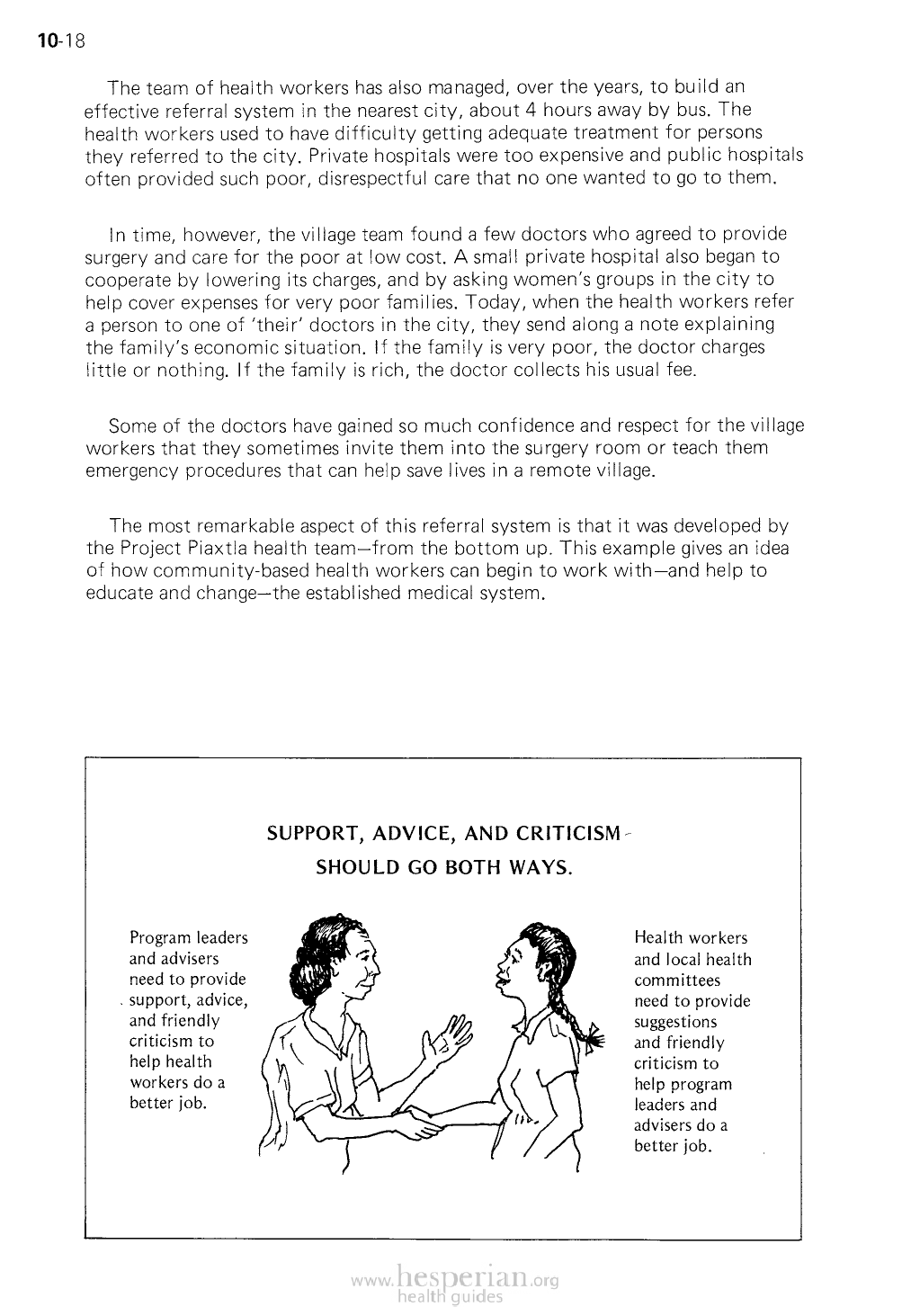
10-18
The team of health workers has also managed, over the years, to build an
effective referral system in the nearest city, about 4 hours away by bus. The
health workers used to have difficulty getting adequate treatment for persons they
referred to the city. Private hospitals were too expensive and public hospitals often
provided such poor, disrespectful care that no one wanted to go to them.
In time, however, the village team found a few doctors who agreed to provide
surgery and care for the poor at low cost. A small private hospital also began to
cooperate by lowering its charges, and by asking women’s groups in the city to
help cover expenses for very poor families. Today, when the health workers refer
a person to one of ‘their’ doctors in the city, they send along a note explaining the
family’s economic situation. If the family is very poor, the doctor charges little or
nothing. If the family is rich, the doctor collects his usual fee.
Some of the doctors have gained so much confidence and respect for the village
workers that they sometimes invite them into the surgery room or teach them
emergency procedures that can help save lives in a remote village.
The most remarkable aspect of this referral system is that it was developed by
the Project Piaxtla health team—from the bottom up. This example gives an idea
of how community-based health workers can begin to work with—and help to
educate and change—the established medical system.
SUPPORT, ADVICE, AND CRITICISM
SHOULD GO BOTH WAYS.
Program leaders
and advisers
need to provide
support, advice,
and friendly
criticism to
help health
workers do a
better job.
Health workers
and local health
committees
need to provide
suggestions
and friendly
criticism to
help program
leaders and
advisers do a
better job.